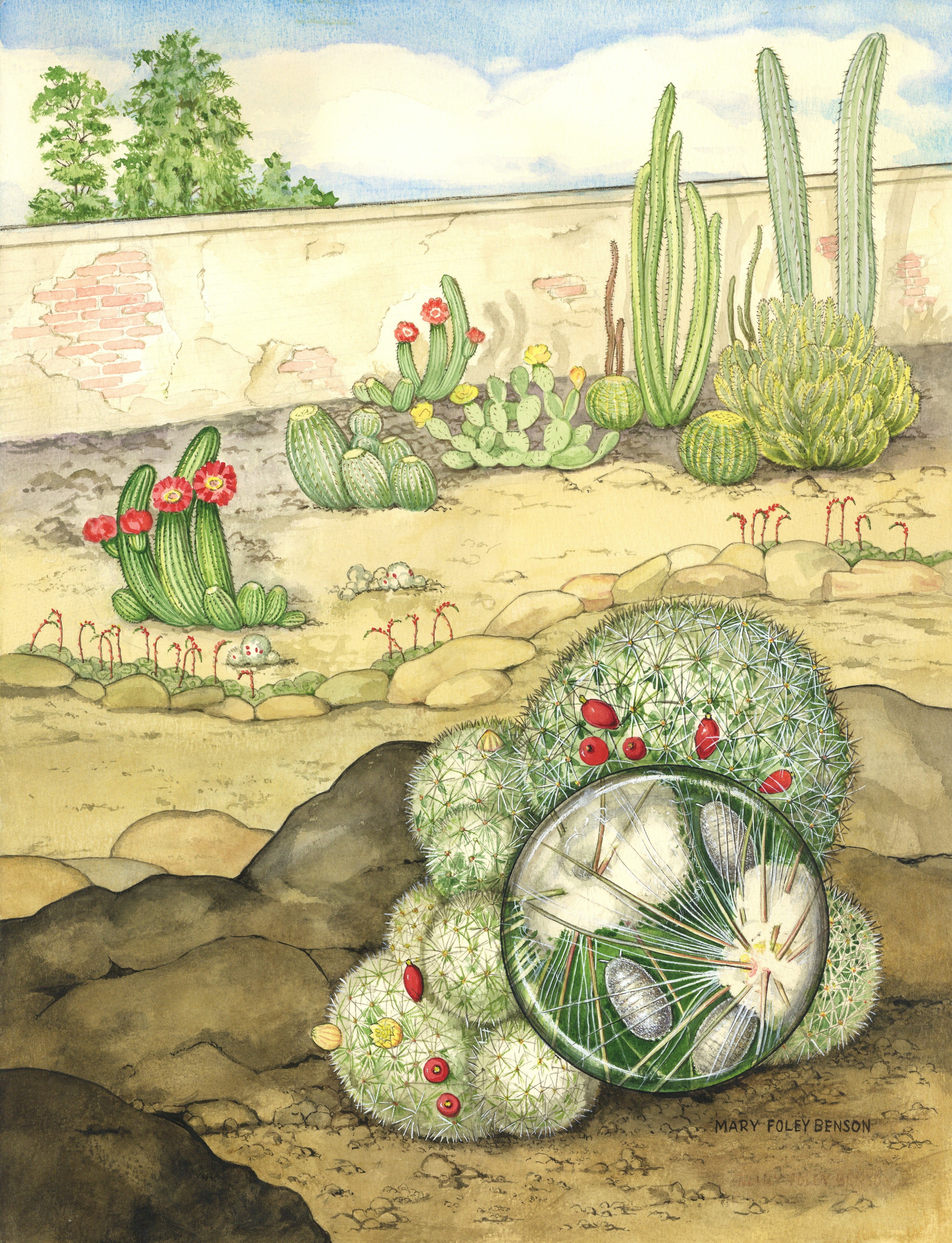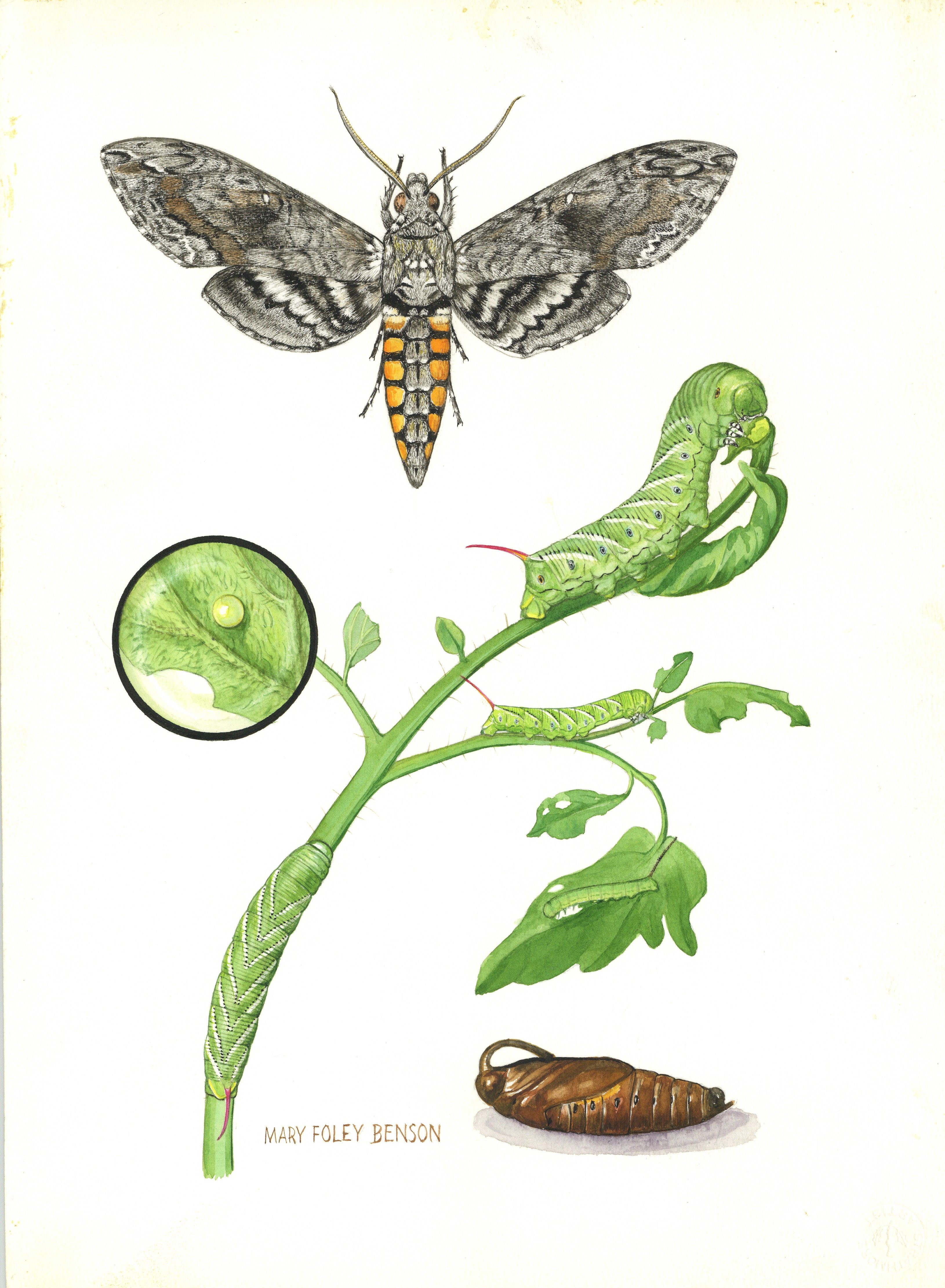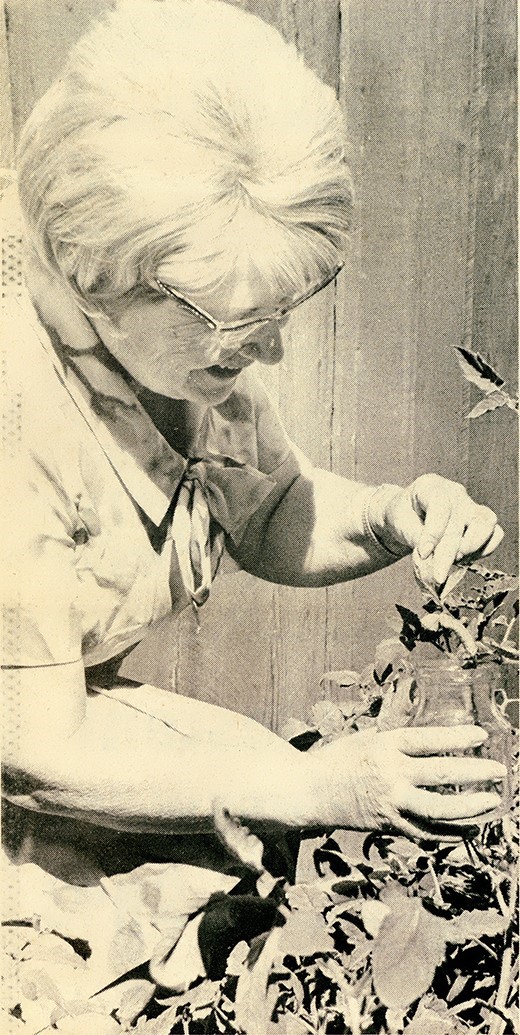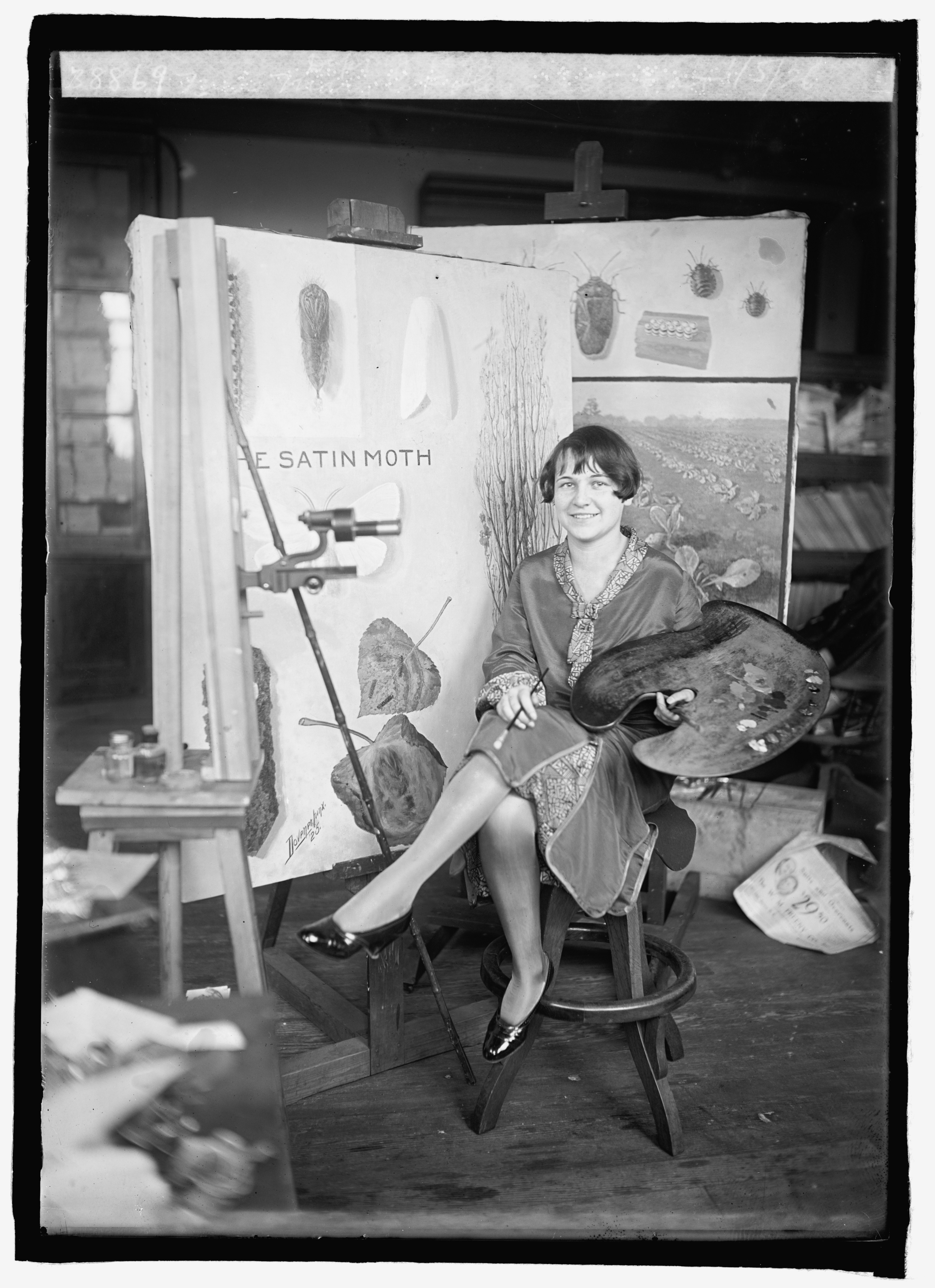Mary Foley Benson, 20th Century Scientific Illustration, and Women in STEM
Srđan Tunić
07/10/2023 | Projects
“At least she can be free of bugs”
“Are you sure you want to do an internship here?” “Yes... why, what’s the catch?” “Nothing, we just never had art historians here before.” Dr. Lynn Kimsey, director of the Bohart Museum of Entomology at UC Davis, was not joking. I was surrounded by entomologists and other scientists. Despite being one of the several museums on campus, no one from my Art History department had any prior collaboration with the Bohart Museum. With a collection focused on nearly eight million dead insect specimens, perhaps a collaboration sounded daunting or simply lacking any artworks with which to engage. But despite not having any takers, the Bohart Museum has been open to include art in their outreach program and even has some in their collection. I was eager to have practical museum experience in the US and was given free rein in shaping my research during two academic quarters in 2022. One of the gems I discovered there was a collection of original watercolors by scientific illustrator Mary Foley Benson (1905-1992, Figure 1). In this blog post, I will showcase the results of my collaboration with the Bohart Museum and specifically what I learned about the artist. This piece also engages with the history and technology of botanical and entomological illustration, the inequitably gendered representations of women in this field, and the role of museums and archives in shaping these domains.
Figure 1: "Miss Mary C. Foley, Artist at Dept. of Agriculture," 1/5/26. [Image credit: National Photo Company Collection (Library of Congress)]
Mary Foley Benson was a multitalented person. She lived and studied in Washington, D.C., where she worked for the United States Department of Agriculture (USDA) and the Smithsonian Institution as the senior scientific illustrator, collaborating with numerous entomologists of the day and illustrating numerous publications. She learned to fly in the mid- 1930s and was a pilot during WWII before she moved to California.1 She came to Davis, CA, in 1964, on the invitation of professor Howard L. McKenzie to work on his seminal research, Mealybugs of California, with Taxonomy, Biology, and Control of North American Species, which was published in 1967. Around the same period, she collaborated with another UC Davis entomology professor, William Harry Lange, Jr., on an unpublished research project on the lifecycles of agricultural pests. “At least she can be free of bugs,” was how the 1987 article in the Davis Enterprise commented on her retirement in 1972 from the Department of Entomology.2 The journalist mentions Foley Benson was “enjoying painting flowers unharmed by insects,” but that doesn't mean she disliked them. According to the illustrator: “I work from living insects, I put them under the microscope and study them and how they move... I like to watch the little varmints, to see how they walk and which leg goes after which.”3 A 1972 article jokingly states: “She has been described by her neighbors as the only person who grows vegetables for bugs. Her back yard has a tomato crop, but the tomatoes are grown for insect, rather than human, consumption.”4 After her retirement, she continued making art in the realm of botanical illustration, taking part in regional exhibitions and selling lithograph prints of her watercolors.

Figure 2: Mary Foley Benson, Spilococcus cactearum McKenzie, 1965, watercolor. Digitized by the author. [Image credit: Berkeley, California, U. C . Botanical Gardens, Alameda County, June 3, 1965, on Mammillaria prolifera (cactus). Bohart Museum of Entomology, Department of Entomology & Nematology, University of California, Davis.]
“Rare bird file”
Even with this biographical sketch, there were still many questions about Mary Foley Benson. In spring 2022, thirty years after her death, when I was doing my initial research, there was barely any mention of her on the internet. Faced with archival fragments, I needed a methodological approach to locate the artist within a partial record of their work. In short,working with archives meant dealing with im/materiality, omissions, gaps, “ghosts,” and finding ways to incorporate them in an inclusive way.5 The existing archive on her work at the museum was fragmentary and detective work was necessary to piece together a more informed representation of her life by diving into the existing archives on campus (Bohart Museum, special collections at the Shields Library), writing to several other archival institutions in the country, following leads from interviews, searching through databases of digitized scientific publications (such as HathiTrust and Biodiversity Heritage Library), and trying to get in touch with people who knew her. After several dead ends, I decided to go back to the artworks that sparked my initial curiosity.

Figure 3: Mary Foley Benson, Tobacco hornworm (Manduca sexta) on tomato, n.d., watercolor. Digitized by the author. [Image credit: Bohart Museum of Entomology, Department of Entomology & Nematology, University of California, Davis.]

Figure 4: Mary Foley Benson harvesting a horn worm off tomato. [Image credit: Rod Jew, The Daily Democrat, October 11, 1972.]
“Stop and look at them. Don’t just glance.”
Looking at the artworks, two rabbit holes opened. One indicated that there are quite a few women illustrators from the twentieth century whose work appeared unmentioned. Apart from well-known names such as Anna Botsford Comstock (1854–1930) and Mary Vaux Walcott (1860–1940) (whose Wild Flowers of North America was republished in 2022 by the Smithsonian), there are Californian contemporaries of Foley Benson such as Celeste Green and Frieda Abernathy, or other UC Davis illustrators such as Ellen Isham Schutt, among many others who remain in the shadows.6 The other rabbit hole was a need to position Mary Foley Benson in the wider world of the twentieth century illustration. Both were out of scope of my work, but indicated a clear gap in the research. According to Margaret W. Rossiter, in the US, from the late nineteenth century, concurrent with movements for women’s equality and suffrage, increasing numbers of women gained access to scientific training and employment; seen as a feminized task, illustration was a feasible way in.7 Or, as Dr. Kimsey, who also started her career as an entomological illustrator in the 1970s, explained in an interview, it was not just a way to get your foot in the door, but also a way to stay there.
Surprisingly, unlike traditional illustration of the past centuries (often referred to as “the golden age”), twentieth century scientific illustration lacks attention. One can find more about famous illustrators such as Maria Sibylla Merian (1647-1717) or 19th century Victorian illustration than Mary Foley Benson’s contemporaries. Additionally, many technological shifts (such as photography after WWII and digital illustration more recently) contributed to a general decline in traditional techniques and its use in the world of science. At the same time, as traditional illustration, and especially botanical art, was turned away from scientific spaces, it came to be lauded in the fine arts. Catharine M. Watters, a local botanical artist and instructor, whose early interest in botanical art was influenced in part by Foley Benson, said to me in an interview, “It was like a renaissance.” Fuelling this upwelling of interest were collectors’ interest in both historical and contemporary art, as well as people’s connection with the natural environment, and the need for alternatives in the overwhelmingly technological society.8

Figure 5: Mary Foley Benson watercolors at the Bohart Museum, Aggie Spirit Week, 2022. [Image credit: Author]

Figure 6: The author next to Mary Foley Benson’s artwork at the Shields Library, 2023 [Image credit: Catherine M. Watters]
These discussions on gender, art history and technological shifts within STS—science, technology, and society—are a good way to initiate, frame, explore, or even challenge some of the existing narratives. Yet, turning to historical examples such as Mary Foley Benson can be not only a way to address the still-existing gender imbalance present in STEM, but also to engage in local collections and make history more accessible and visible. Projects such as the Biodiversity Heritage Funds’ Her Natural History: A Celebration of Women in Natural History are good examples of this kind of work on an institutional level. By digitizing artworks, organizing museum tours, public lectures and exhibitions (Figure 5), publishing research, even Wikipedia articles (like the one I made for Mary), we can share our findings publicly and leave traces for future researchers. In a museum setting, which has the means and power to normalize discourses of knowledge, we can amplify unexplored or underrepresented voices, to make new cycles of visibility and representation. Opening access to historic figures also creates an invitation to fill other gaps: What about her botanical work (Figure 6)? Have any of her stage set designs for Pierce Hall Players from D.C. been preserved? Was she the first woman pilot in the US as stated by one exhibition catalog? What about her clown portraits in Los Angeles? With a renewed interest in her work since 2022, I hope Mary’s incredible work receives even more attention in the years to come. After all, just like in the case of her insect life cycles, her own work goes through periods of reevaluation, visibility, and interpretation.
Notes
1. See: https://en.wikipedia.org/wiki/Mary_Foley_Benson; Furniss, Malcolm M. 2022. “Mary Foley Benson: Master of the Art of Scientific Illustration of Insects and Flowers.” Entomology & Nematology News, Agriculture and Natural Resources, University of California (June 21, 2022). https://ucanr.edu/blogs/blogcore/postdetail.cfm?postnum=53492.
2. Robertson, Kathy. 1987. “Doing as she pleases. Neighbor spotlight: Mary Foley Benson.” The Davis Enterprise (Monday, April 20, 1987), 15.
3. Robertson, ibid.
4. Reese, Laura. “Mary Foley Bensen [sic]: The army says she’s a rare bird.” The Daily Democrat (October 11, 1972): 4.
5. For more, see Verne Harris, Ghosts of Archive: Deconstructive Intersectionality and Praxis. Routledge, 2020; Carolyn Hamilton, ed. Refiguring the archive. Springer Science & Business Media, 2002; Ann Laura Stoler, Along the archival grain: Epistemic anxieties and colonial common sense. Princeton University Press, 2008.
6. See: Chacko, Xan. 2019. “Standardising Life, Depicting Decay: Ellen Isham Schutt’s Watercolours of Apples (1911-15).” Unpublished paper.
7. Rossiter, Margaret W. “’Women's Work’ in Science, 1880-1910.” Isis, Vol. 71, No. 3 (September 1980): 381-398. For contemporary discussions in the US, see American Entomologist Volume 57, Issue 4, Winter 2011.
8. Ben-Ari, Elia T. 1999. “Better than a thousand words: Botanical artists blend science and aesthetics.” BioScience, Vol. 49, No. 8 (August 1999): 602-608. Saunders, Gill. 1995. Picturing Plants: An Analytical History of Botanical Illustration. Berkeley & Los Angeles: University of California Press and London: The Victoria and Albert Museum.
Srđan Tunić is an art historian and curator dedicated to researching and promoting various forms of contemporary art, especially street art via the Street Art Belgrade initiative. Srđan graduated from UC Davis in 2023 with the thesis “The Adventures of Inspector Yoda the Wrinkled: Queering the Streets of Belgrade” and has joined the PhD program in Art History at Temple University.
Published: 07/10/2023

